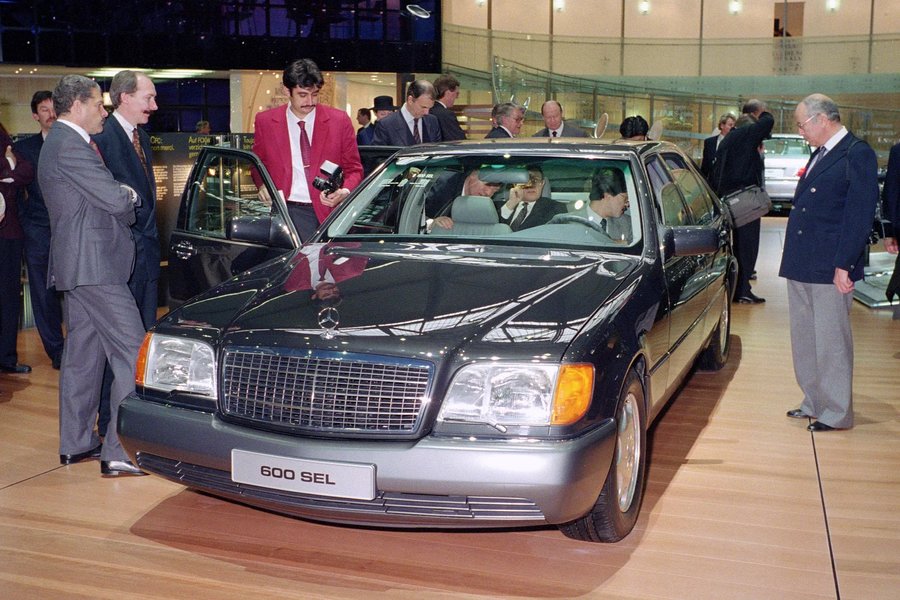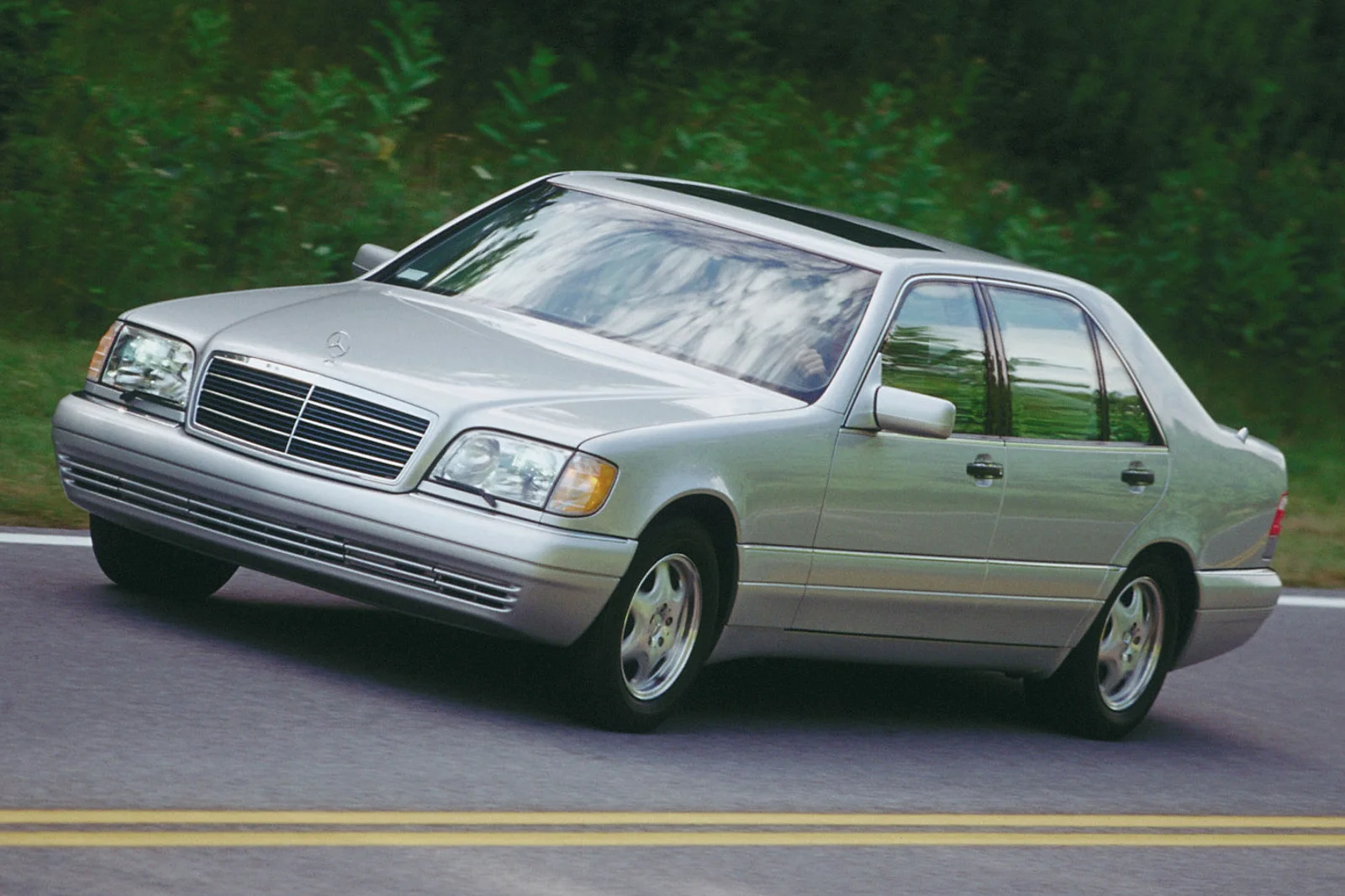The Story Behind Mercedes-Benz's Worst S-Class Mistake

Twenty-five years ago, Mercedes-Benz revealed the W220 generation of the S-Class at the Paris Motor Show. The fourth generation (or seventh, depending on how you look at it) ushered in a new design language for the Three-Pointed Star, along with groundbreaking technology, new engines, and heightened levels of luxury.
Like its predecessors, it would be billed as "the best car in the world." The automotive press praised the graceful styling, the surprising turn of speed, and the sophisticated gadgets like the radar-guided cruise control and Active Body Control (ABC) suspension.
With hindsight, however, we can now look back on the W220 and see it for what it is: the low point of the S-Class dynasty. A compromised, cost-cutting exercise on wheels that Mercedes used to betray the hallowed nameplate - all for increased profits.
But what led Mercedes to this point? And is the W220 as bad as we're led to believe? On the 25th anniversary of the unloved Sonderklasse, we're setting out to understand the history behind the most controversial car to wear an S-Class badge.
A Quick History Lesson
Before we get into the intricacies of the W220 series, we have to go back to the late 1980s. The European marques, notably Mercedes-Benz, were ruling the luxury car roost in the US. The W124 E-Class was the epitome of upper-middle-class success, while there was no greater symbol of wealth and prestige than the W126 S-Class sedan.
However, a threat from the East was preparing to upset the apple cart. Lexus launched the near-perfect LS 400 in 1989 and quickly stole market share from Mercedes, BMW, and Jaguar. American consumers were trading their prestigious Euro sedans for the Lexus at record rates.
To make things worse, the LS boasted superior refinement, vault-like build quality, and a cabin full of features for nearly half the price of its established competitors. Suffice to say, domestic competitors such as Lincoln and Cadillac were doubly worried.
As a result, Mercedes knew it had to pull out all the stops for the W126 replacement.
Cue the W140-generation S-Class. Introduced in 1991, "The Cathedral" was Mercedes' way of showing its competitors the middle finger. Larger, heavier, and longer than before, the W140 introduced a new level of luxury. However, it was also 25% more expensive (on average) than the W126, placing it further out of reach for buyers.
While the imposing styling is admired now, it was criticized at the time for being a bastion of excess. This was a big deal in the early '90s, especially with the effects of climate change becoming more important. The big Mercedes became the poster child for excessive wealth and conspicuous spending, tainting its image before reaching dealerships. Ironically, it was one of the most environmentally responsible vehicles of its time.
And because Mercedes wanted to crush the LS400 in every way, the automaker poured an immense amount of money into the development process - a reported $1 billion, to be exact.
A New Way Of Doing Things
The immense development costs and multiple delays resulted in chief engineer Wolfgang Peter losing his job. He departed from Mercedes, and the managerial board realized something had to change. The automaker could no longer take its time developing new vehicles. The W140, an engineering marvel, signaled the end of Mercedes' engineer-driven ethos.
Following the DaimlerChrysler "merger of equals," incredible engineering and a disregard for budgets made way for a wider vehicle range and dumbed-down products. This resulted in catastrophes like the first-generation ML-Class and the hateful V-Class.
The new S-Class arrived in 1998 and debuted in the middle of a global recession. But this was a luxury sedan for the 21st century. Smaller, lighter, and more efficient than before, Mercedes was showing the world that it could right the wrongs of the past model, and people lapped it up.
The Greatest Car In The World—Until It Wasn't
The world's motoring press lavished praise on the W220 when it arrived. Speaking of the performance, Top Gear's Quentin Wilson said, "With the S-Class, the Germans have rewritten the luxury car rulebook. This is a big car that's actually fun to drive." Wilson would later say, "As far as I'm concerned, this is quite simply the best car in the world."
So it could outperform a BMW, had more brand cachet than an Audi, and was streaks ahead of Lexus in terms of refinement. On paper, it was perfect, and that's before you even got to the technology. The S-Class has always been a crystal ball of automotive innovation, and the W220 was no different.
Innovations included 'Airmatic' air suspension, 'Distronic' radar-guided cruise control, keyless entry and push-button start, and ventilated seats with a massage function. The facelift would introduce the advanced Pre-Safe system, which could detect an impending accident and prepare the vehicle for impact.
Once owners had grown tired of prodding the buttons, the W220 started showing its real colors. Customers were shocked that their $100,000 cars were prone to premature rust. This affected the wheel arches, trunk lid, and integral suspension components.
Speaking of the suspension, the Airmatic system that provided a creamy smooth ride was riddled with faults in the earlier years. Failing compressors, air leaks, faulty level sensors and airbags, and problematic compressor relays were just some of the issues the W220 faced. Admittedly, these problems cropped up later in life, but many owners decided to scrap the cars because of the high repair costs.
Rather amusingly for us today but not for buyers then, some owners who parked their vehicles outside said their batteries would go flat overnight during strong winds. This is reportedly because the self-leveling system would remain active even when the car was switched off, attempting to keep the vehicle level in strong winds.
The "Best Car In The World" Illusion Starts To Crumble
In the mid-2000s, Consumer Reports (CR) described the W220 as one of the "least reliable luxury cars," with an overall poor rating. The S-Class wasn't the only vehicle that fared poorly, with seven of the 11 Mercedes vehicles available not recommended by CR. The remaining four were too new to be recommended.
At the time, a Mercedes spokesperson said the ratings were "totally out of sync with what we're seeing in the mainstream research as well as our own customer satisfaction and warranty data."
For a brand that once led the field in reliability and quality, these poor rankings showed where Mercedes was heading. In the early '90s, Mercedes-Benz dominated reliability and dependability studies. Fast forward just ten years, and the automaker was left flailing behind brands like Jaguar. So much for "engineered like no other car in the world."
Facelift Brought Improvements, But It Was Too Late
In 2003, Mercedes-Benz introduced a facelifted model with vastly improved quality. Interior plastics were of a higher standard, and there was a more robust Airmatic system alongside improved engines. The 5.0-liter V8 remained unchanged, but the V12 in the S600L was completely new. The 6.0-liter twin-turbo unit produced 493 horsepower and gave the big Benz a real turn of speed.
The S55 AMG gained a supercharger, and in 2004, the mighty S65 AMG would arrive. Those looking for a W220 today are encouraged to look for the later models, particularly the AMG and V12 models. However, buyers need to remember that these vehicles are still highly complex and aging vehicles that can be expensive to maintain.
But the arrival of the facelift was a few years too late. By then, the company's reputation for quality and reliability had crumbled, undoing years of hard work, and the good S-Class name had been tarnished.
The Worst S-Class Ever Made
No matter how you look at it, the Mercedes-Benz W220 is the worst car in the S-Class lineage. Riddled with faults ranging from build quality issues to electrical gremlins, the halo luxury sedan was a huge disappointment after the iconic W140.
Mercedes knew it messed up, and that's why the W221 generation that followed was designed to right the wrongs of its predecessor. We can't blame the car but rather the culmination of events (stretching back to the '80s) that led to its creation.
In order to stay profitable and compete with the newcomers, the Stuttgart-based company had to stop building over-engineered cars. However, Mercedes' biggest mistake was rushing the W220 to market with new technology and features that had not yet been tried and tested.
Despite this, it was a sales success, with a total of 484,683 units built between 1998-2005.
Does The W220 Deserve Its Poor Reputation?
Yes and no. There's no denying the W220 was a low point in the history of the S-Class, but we believe the luxury sedan was held to a higher standard because it was a Mercedes.
With the exception of the bulletproof Lexus LS430, contemporary luxury vehicles were just as problematic as the W220 - if not worse. BMW's E65/6 7 Series was riddled with faults. Mechanical issues include timing chain tensioner and valve seal issues on certain models. Electrical problems were also common, and so were gearbox and suspension complications. Similar criticisms can be leveled at the Audi A8 (D3) and the L322 generation of the Range Rover.
While these problems are well-documented, and people know to stay away from these vehicles generally, it's the W220 that is remembered for its litany of faults.
Mercedes Has Learnt From Its Lessons
The W220 taught Mercedes one thing: not to mess with its flagship offering. In the subsequent models that followed, there was a distinct return to quality, and while plenty of technology is on board, things are more durable than before.
We can't imagine Mercedes would again allow its top-line model to be sucked into such a tumultuous whirlwind. The W221, W222, and W223 boast build quality superior to other contemporary Mercedes offerings, while all three introduced important technology to the automotive industry.
Even with its controversial legacy, there's still something innately desirable about the W220. It's a beautifully styled sedan powered by relatively robust powertrains. If you want one, we'd recommend spending as much as possible on a low-mileage model with impeccable service records. You may be driving around in the poorest S-Class yet, but the worst of the best is still better than most.

Related News
